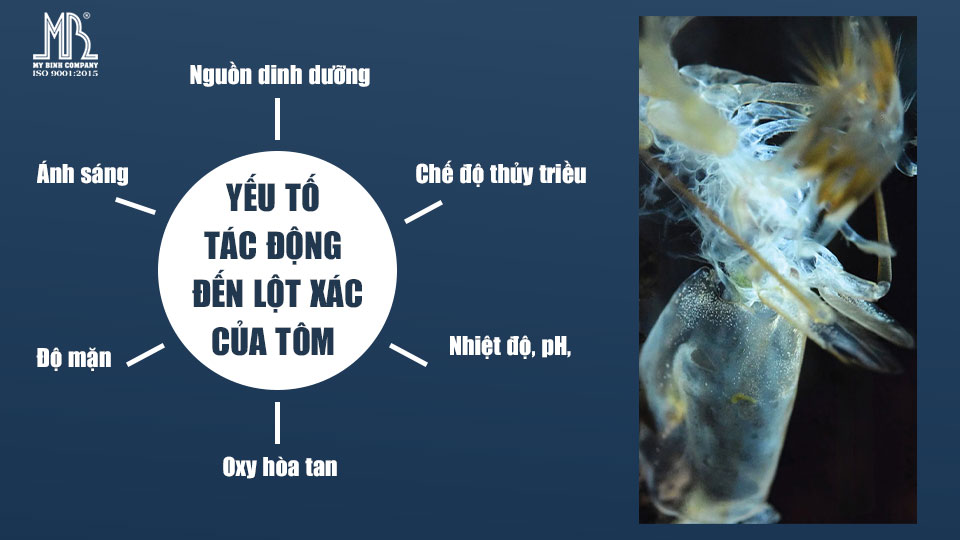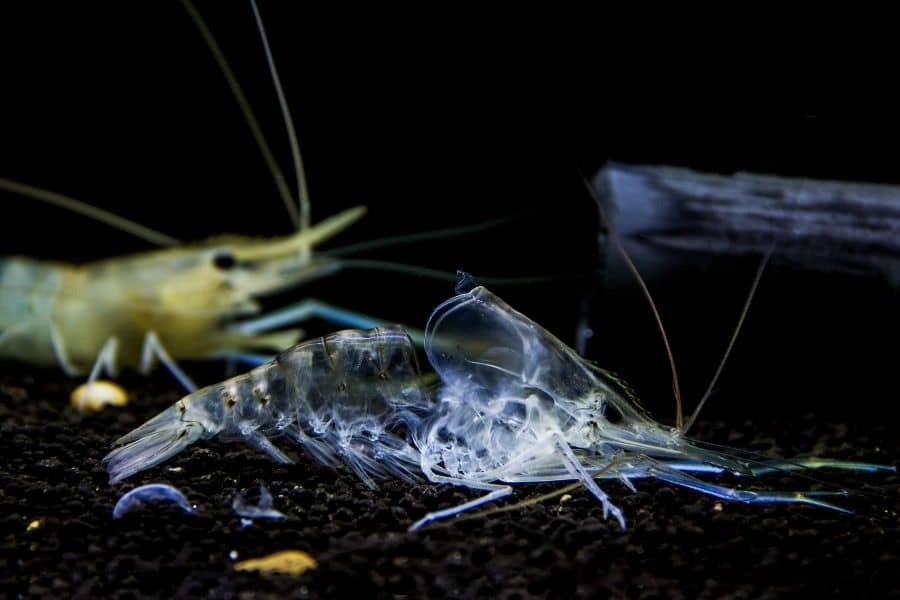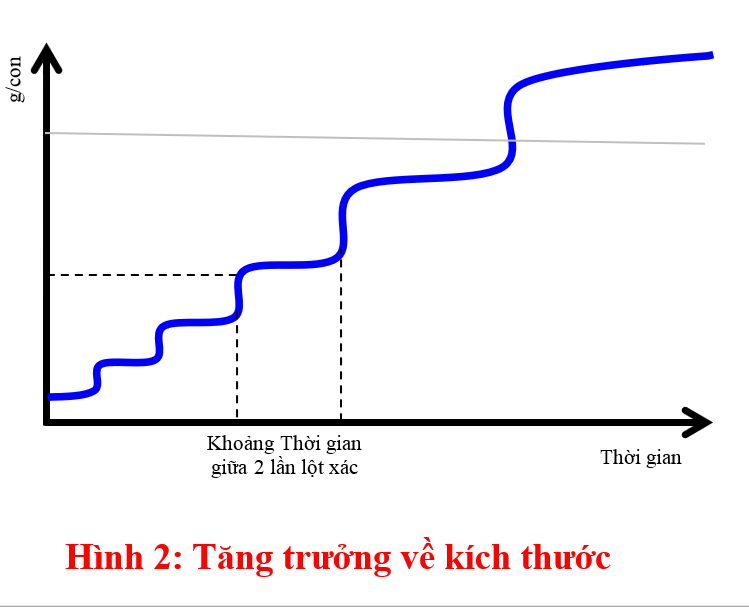FACTORS AFFECTING MOLTING AND GROWTH CHARACTERISTICS IN WHITE-LEG SHRIMP
Like other crustaceans in general, the growth of white-legged shrimp in particular must undergo a molting process. The mechanism of molting is the result of a process of synergistic effects of many factors and takes a certain amount of time.
I/ Factors affecting the molting process of shrimp
Under natural conditions, shrimp only molt when there is a close combination of factors within the body such as: Lipid reserves in the liver and pancreas are fully accumulated; increased cell division; messenger RNAs are formed; organs require hormones as intermediate products; and the biosynthesis of new proteins is fully formed in body parts. This preparation is a complex process that requires time.
Image: Factors affecting the molting process of shrimp
Besides, external factors such as: Light, tidal regime, nutrient sources, temperature, pH, dissolved oxygen, salinity,... also contribute to molting. Normally the molting process takes place at night; Molting a lot at the beginning of the tide because there is the most food (However, in many ponds, shrimp molts day and night and does not depend on the tide); Water temperature < 14oC shrimp will not molt. When the temperature is within the appropriate range, shrimp will increase metabolism and the molting process will occur faster; The appropriate pH for molting shrimp is about 7.5-8.3; During the molting process, shrimp's need for oxygen is very high. At a concentration of 5-6 mg/L, it will help shrimp molt easily; Low salinity leads to faster molting time (But shrimp will be lighter if alkalinity and minerals are low), salinity 15-25 ‰ molting time is normal for shrimp, and salinity > 25 ‰ has too high alkalinity. Shrimp will be slow to molt and grow slowly (but will have firm meat and heavy weight).
Usually, molting time lasts about 5-7 minutes. The external manifestation of molting is that the connections between the epidermis and the chitin shell will loosen, the cephalothorax shell and abdominal shell separate on the dorsal side, then the shrimp shrinks and vermicelli escapes the old shell. The molting fluid emitted includes amino acids, enzymes and another organic substance that protects the body from attack by other animals. The molting process takes a long time to prepare. If there is a problem at any stage, the molting will not occur or there will be deformities, shell sticking, etc. Depending on the size and quality of the shrimp feed, water quality, and complete shell hardening time from a few hours (small shrimp) to more than 1 day.
II/ Growth characteristics of farmed shrimp
Growth of white-legged shrimp and black tiger shrimp, the growth in length and weight is different. While weight growth is almost continuous (Figure 1) (New abnormal cases increase intermittently), size growth follows a "staircase" (After each molt, size will increase unusually fast). usually (Figure 2).
III/ Molting time of white-leg shrimp
The general principle is that the larger the size of the shrimp, the longer the time between two molts or the molting cycle will be than that of smaller shrimp. On the other hand, depending on farming density conditions, type of shrimp seed, season, water quality and shrimp health,... shrimp size may vary by a few grams/head (Compared with the same age date).
Image: Molting time of white-leg shrimp
In farmed shrimp populations, shrimp health and environment are good and stable, usually molting lasts 2-3 days; If the shrimp population is not well managed, it can spread waste for many days. Based on the above analytical factors, farmers can be more proactive in controlling the molting cycle of shrimp to suit farming purposes; proportional to auxiliary equipment; Shrimp growth physiology and weather and climate conditions; Helps farmed shrimp become more uniform in size but does not molt simultaneously throughout the day, causing the shrimp to float due to lack of oxygen or overloaded water quality.
III/ What to add when shrimp molt
- Add NANOMIX to the pond to provide adequate minerals. This helps shrimp harden their shells quickly after 2 hours of molting.
Ensure nutrition and increase shrimp resistance by supplementing SOREX, a nutritional mixture of vitamins, microminerals, and electrolytes. This helps shrimp increase resistance and reduce stress when the weather changes, especially on days when shrimp molt.
- Manage the pond water environment well, ensuring beneficial microflora, causing pond water color by using O3 probiotics.
- At the same time, the food must ensure quality, adequate nutritional content, and not be moldy for the shrimp to gain the best weight.
The molting process is an important part of the development of farmed shrimp, and requires special care from farmers.
Contact us now: at WhatsApp: +84939881532 (Mrs. Camryn Ho) or leave a comment below to receive more useful advices from us. We wish farmers had successful shrimp and fish seasons and high prices!
.......................................................................................
MY BINH EXPORT-IMPORT TRADING LIMITED COMPANY
Main Office: 49/11B, Tran Hoang Na Street, Hung Loi Ward, Ninh Kieu District, Can Tho City, Viet Nam.
Factory Address: 28T, Nguyen Van Quy Street, Phu Thu Ward, Cai Rang District, Can Tho City, Viet Nam.
Hotline: +84911383533 or +84983173322
Website: https://mybinh.com.vn
Email: mbtrade9@gmail.com






